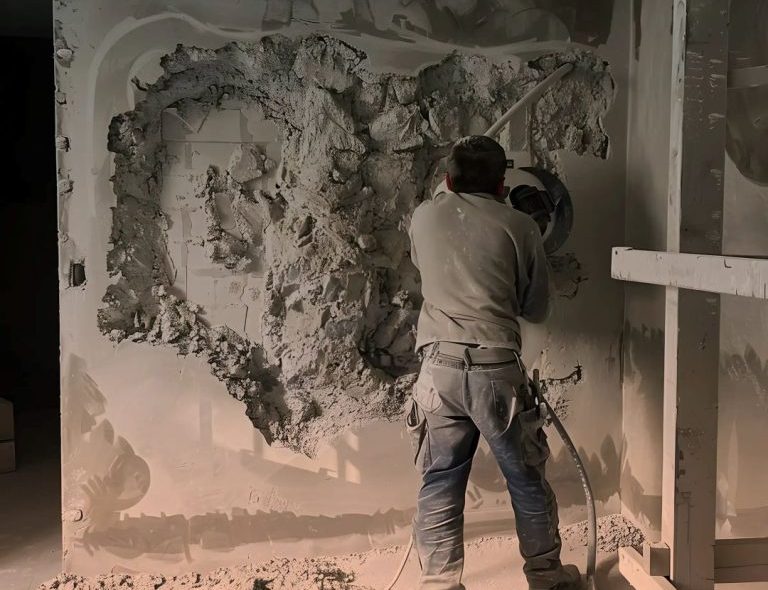When it comes to transforming interior spaces—whether in a commercial building, retail store, or office—two popular terms often emerge: fit-out construction and renovation. Both processes aim to enhance the functionality, aesthetics, and usability of a space. However, they serve different purposes and are applied in different contexts. For property owners, developers, or facilities managers, understanding the difference between the two is essential when planning a successful project.
Let’s break down each process, examine their benefits, and explore the important role of property maintenance services in keeping any upgraded space in excellent condition.
What Is Fit-Out Construction?
Fit-out construction refers to the process of taking an empty, often bare-bones space—typically called a “shell”—and turning it into a usable and functional environment. This process is commonly applied to commercial properties such as office buildings, retail shops, or restaurants, where the interior must be customized based on the business’s operational needs.
Fit-out services usually begin after a property developer has constructed the base building or “shell and core.” At this point, the space lacks interior walls, lighting, HVAC systems, and even floors. That’s where fit-out contractors come in—bringing the interior to life.
Fit-out construction is often divided into three stages:
- Shell and Core: This is the most basic phase. It includes the structural framework—such as exterior walls, floors, and ceilings—but does not include internal finishes or building systems like plumbing or electricity.
- Category A (CAT A): At this stage, the space is outfitted with fundamental components like raised floors, suspended ceilings, lighting, fire safety systems, and HVAC. It’s a blank canvas, ready for further interior customization.
- Category B (CAT B): This is where the magic happens. CAT B involves full interior personalization, including installing partitions, branding elements, IT infrastructure, furnishings, kitchen spaces, and décor. This level of detail ensures the space reflects the unique identity and functionality required by the tenant or business owner.
Businesses often turn to fit-out services to make sure their space is not only functional but also on-brand, efficient, and aligned with employee or customer needs.
What Is Renovation?
Renovation, on the other hand, is all about revitalizing an existing space. It involves repairing, restoring, or upgrading areas that may have become outdated, damaged, or no longer serve their original purpose. Unlike fit-outs, renovations typically retain the original structural layout and aim to refresh the interiors.
Renovation work can range from cosmetic updates—like repainting walls and changing floor finishes—to more involved tasks, such as rewiring electrical systems, replacing plumbing fixtures, or updating the HVAC setup. Whether it’s an aging office building that needs a modern touch or a retail store rebranding for a new image, renovation is the way to bring a new lease of life to an existing space.
Renovation projects are ideal for property owners looking to preserve the building’s core while adapting to evolving design trends, safety standards, or business demands.
Fit-Out vs. Renovation: Key Differences
Although fit-outs and renovations can both dramatically improve a space, they have distinct differences that affect project timelines, costs, and planning.
- Starting Point: Fit-outs begin with a clean slate—often a raw or minimally finished interior—while renovations work with an already-developed or previously occupied space.
- Scope of Work: Fit-outs involve comprehensive build-outs, including installation of electrical, mechanical, and interior elements. Renovations, in contrast, focus more on upgrading or restoring existing features.
- Purpose: Fit-out construction prepares a space for new use, often for first-time occupancy. Renovations aim to improve, modernize, or reconfigure an already-used area.
- Cost and Complexity: Fit-outs can be more resource-intensive and costly due to the need to install entire systems and layouts from scratch. Renovations may be more budget-friendly but can also uncover hidden challenges, such as structural damage or outdated wiring.
The decision between fit-out and renovation ultimately comes down to the existing condition of the property and the long-term goals of the owner or tenant.
Why Property Maintenance Services Matter
No matter how well a fit-out or renovation is executed, a space’s long-term success depends heavily on property maintenance services. These services help maintain the integrity, safety, and appearance of the property, ensuring it remains functional and appealing over time.
Key property maintenance services include:
- Concrete Repairs: Over time, concrete can crack or deteriorate. Structural repairs help preserve the building’s foundation and prevent costly future issues.
- Electrical Repairs: Regular inspection and maintenance of electrical systems prevent outages, reduce fire risks, and ensure energy efficiency.
- Plumbing Services: Keeping water systems in check prevents leaks, clogs, and potential water damage that could compromise your newly renovated or fitted-out space.
- Post-Construction Cleaning: After any build or renovation, deep cleaning services ensure the space is ready for immediate use—safe, clean, and professional.
Ongoing property maintenance doesn’t just extend the life of your fit-out or renovation—it also protects your investment. Neglecting maintenance can lead to premature wear, safety risks, and expensive repairs down the line.
Conclusion
Whether you’re moving into a brand-new space or breathing new life into an existing one, understanding the difference between fit-out construction and renovation is key to making the right decision for your property. Fit-out services are ideal when starting from scratch, offering a fully customized interior suited to your unique operational needs. Renovation, on the other hand, is best when an existing structure requires updating or modernization.
In both cases, integrating reliable property maintenance services is essential. A well-maintained space ensures safety, longevity, and optimal performance, helping you get the most out of your investment.
By taking the time to evaluate your space, clarify your goals, and choose the right approach, you’ll be better positioned to create a functional, attractive, and future-ready environment—whether you’re building it from the ground up or giving it a second life.
 :
https://www.pinterest.ph/toplissolutionsinc/
:
https://www.pinterest.ph/toplissolutionsinc/

